Apple Stories Part 1: 'The Herefordshire Pomona'
Updated: Dec 2, 2024
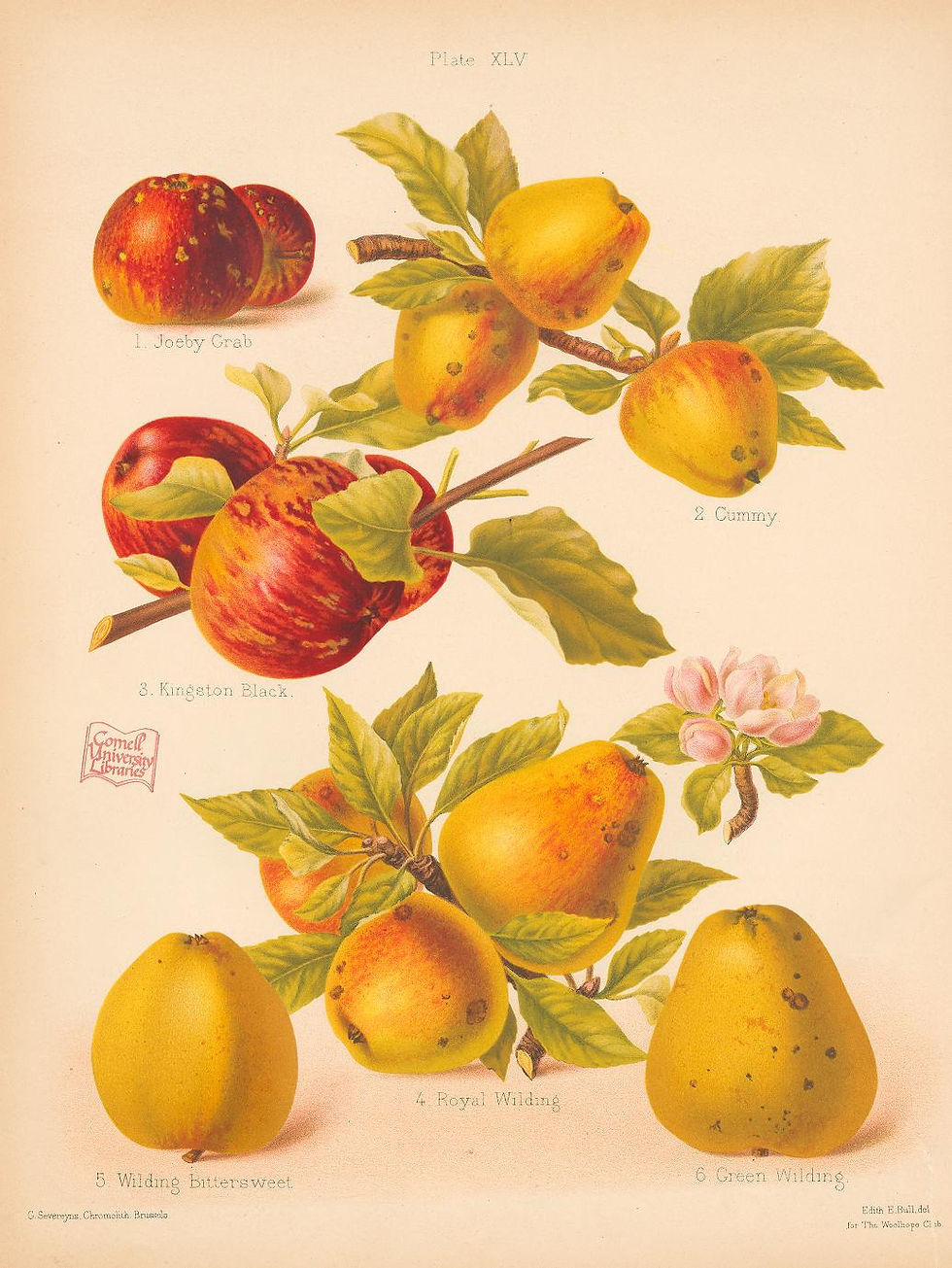
Plate XLV from 'The Herefordshire Pomona’, vol. 2, 1876-1885
“There is no fruit, in temperate climates, so universally esteemed, and so extensively cultivated, nor is there any which is so closely identified with the social habits of the human species as the apple”.
Robert Hogg, British Pomology, 1851
Introduction – An interesting visit
At the end of September, I visited Croft Castle, a National Trust property close to where I now live in Herefordshire, to see their exhibition, An Apple Gathering. The exhibition was a celebration of the cultural significance of the apple to the county’s history, through a combination of art, music, sculpture, literature and horticulture – with various exhibits in both the Castle and around the gardens.
Herefordshire is a rural county probably most famous for its apple and pear orchards and, of course, for its cider – Bulmers in Hereford, having the world's largest cider factory, is one of two of the biggest private sector employers here. Unfortunately, there are not as many orchards as there once were – something that I’ve heard complained of often.
A Herefordshire orchard, c.1900’s. Photographer unknown

But apples are still an important part of Herefordshire life, celebrated at different times of the year, and several National Trust properties in the county [as well as neighbouring Shropshire and Worcestershire] have orchards growing heritage apples – and at this time of year often have displays where the public are invited to pick and enjoy them.
The variety Herefordshire Redstreak – one of a number of heritage apple varieties on show at NT Hanbury Hall's orchard in Worcestershire, September last year. My photo, 2022
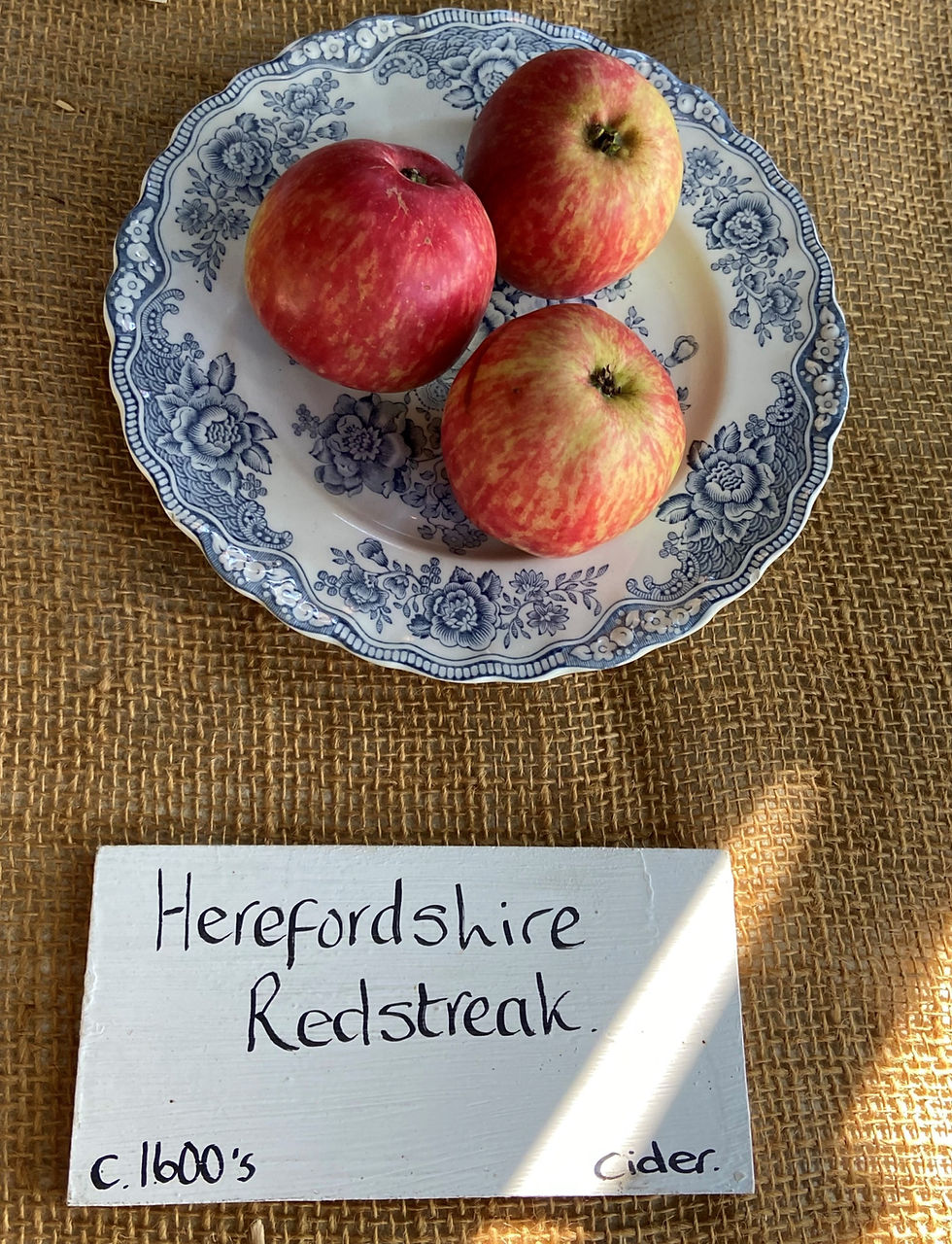
At the exhibition at Croft Castle, one exhibit in particular caught my attention. On show in the house were a series of beautiful watercolours of various heritage varieties of apples and pears, taken from a book titled The Herefordshire Pomona: British Apples and Pears 1876-1885.
The Herefordshire Pomona
The watercolours on show at Croft Castle, like the one below, were the original paintings with handwritten notations. These paintings were later reproduced as chromolithographic plates and published in The Herefordshire Pomona [The Pomona]. These originals were found in the attic of The Pomona's co-author Dr. Henry Graves Bull’s home and bought by the Bulmer company in 1958. Why the original plates were cut up into fragments is not known, but they have since been restored and pieced together, and a wider selection is permanently on show at Hereford's Museum of Cider. The original watercolour below, equates to the published plate XLV shown above.
Original watercolours with notations from 'The Herefordshire Pomona'. This plate equates to the published plate XLV shown above
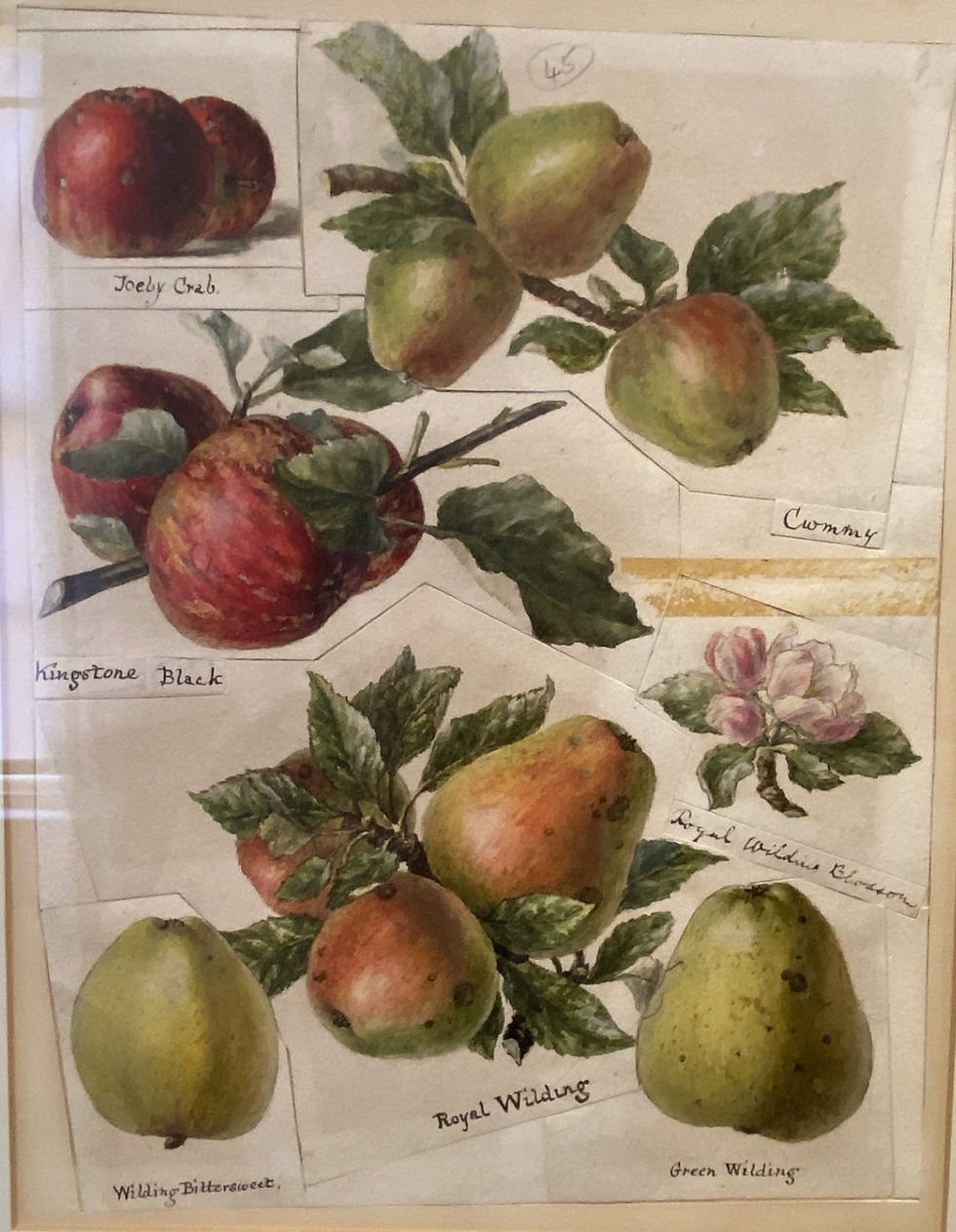
‘The Herefordshire Pomona’, one volume of which was on show at Croft Castle as part of the National Trust’s ‘An Apple Gathering’ exhibition April-November 2023

Herefordshire has for centuries been the centre of English apple cider production, but even in the mid-1800s there was a growing concern among English horticulturists that many of the area’s orchards were falling into disuse, while imports from other parts of the UK and overseas increased in popularity.
And so a number of high-minded Victorian gentlemen, members of Herefordshire’s The Woolhope Naturalists’ Field Club [the Club], got together and decided to do something about it.
The Woolhope Club
The Woolhope Club had been founded in 1851 for “the practical study, in all its branches, of the Natural History of Herefordshire and the districts immediately adjacent” – which would take in parts of Shropshire and Worcestershire. The Club was, and still is, based in Hereford, and its Transactions [a journal of all its doings] has been published regularly since 1856. The Club had several famous ‘honorary’ members, including botanists John Lindley and George Bentham, and geologist Sir Charles Lyell. In 1871, a wealthy member even paid for the building of a public library and museum for the Club. Completed in 1873, it still remains the city’s main public library as well as the Club’s headquarters.
‘Pomona’, the Roman goddess of apples and orchards, by French artist, Nicolas Fouche, c.1700

As mentioned, one of the main things that exercised the Club's members in the mid-1800's was “the sad state of neglect into which the orchards of Herefordshire had been allowed to fall”, and the fact that “so few of the best varieties of apples should appear in the markets, or fruit shops, of Hereford”. But, as an article in The Guardian newspaper [see References] about the state of the UK’s orchards pointed out in 2004, during the time The Pomona was being written the county’s acreage of fruit trees actually increased by 10% to 27,000.
During the 21st century, the UK's fruit production has continued to decline and yet, despite orchards still disappearing, as of April 2023 there were estimated to be 60,700 acres of traditional orchards [see References]. Another often-heard complaint is that so few varieties of British apples are available in supermarkets, although our farm shops often have local and some heritage varieties available.
In order to counter the perceived threat to Herefordshire's orchards, the members of the Club began to stage annual exhibitions to showcase locally grown apples, and invited renowned experts to judge the quality of their fruit while helping to identify unknown varieties or those with a complicated heritage. The Club's committee subsequently called upon its founder and early president, Dr. Henry Graves Bull (1818-1885), a local medical man as well as an enthusiastic amateur naturalist and botanist, to catalogue and describe the fruit displayed at the Club’s shows.
Dr. Henry Graves Bull, date unknown, courtesy Herefordshire Libraries. And below, Robert Hogg, 1886, courtesy RHS Lindley Collection


Bull was aided in this task by one of the Club's experts, Robert Hogg, who suggested that a local 'Pomona' be compiled, which he offered to edit himself. [Pomonas being finely illustrated fruit books, named after the Roman goddess of gardens and orchards, particularly popular in the 19th century.]
Hogg (1818-1897), was a Scottish nurseryman and botanist, described as the most important pomologist in the country at the time [i.e. someone versed in pomology or who cultivates fruit trees]. He spent most of his working life as an editor of gardening magazines and published a book, British Pomology; or the History, Description, Classification, and Synonyms, of the Fruits and Fruit Trees of Great Britain in 1851 [republished in 1859 under the title The Apple and its Varieties: Being A History and Description of the Varieties of Apples Cultivated in the Gardens and Orchards of Great Britain].
This was followed, in 1860, by the Fruit Manual which alphabetically described all the more worthy apple varieties and included simple drawings of 70 fruits. Hogg also co-edited the monthly magazine The Florist and Pomologist: A Pictorial Magazine of Flowers, Fruits and General Horticulture between 1862 and 1870.
He was also an honorary member of the Club, as well as being Vice President of the Royal Horticultural Society – and, according to the Club’s Transactions, was "fairly astonished to see... so many kinds of apples [in Herefordshire] that were new to him”.
Bound volumes of 'The Florist and Pomologist' in the library at Croft Castle. My photo, October 2023

The Club duly established a Pomological Committee consisting of some of its members, together with local fruit growers. Their aims were: "to investigate the varieties of apples and pears grown in the district; inquire into their origin and history; ascertain their value and uses; and to name such varieties as are not known elsewhere... with a view to the publication of a ‘Herefordshire Pomona’".
The book appeared in 7 issues, the first in 1878 and the last in 1884. It was illustrated with 441 original watercolours depicting the different fruits, buds, blossoms, and the blights that affected them. Once complete, the 7 parts were published as The Herefordshire Pomona.
There was no intention on the part of the Club to make any profit from its publication and, beyond copies for its members, only a small number would be offered for sale to the public. In total only 600 copies of this expensive work were published, each separate part costing 10s 6d, although members of the Club could take out an annual subscription at a cost of 5s for each part.
Front page of 'The Herefordshire Pomona, Containing Coloured Figures and Descriptions of the Most Esteemed Kind of Apples and Pears', 1876-1885

The watercolours were executed by two women. As the 'General Introduction' to The Pomona written by Bull explained, the Club was “greatly favoured by the gratuitous services of two ladies who undertook the preparation of the illustrations…”.
These ladies were Miss Edith Elizabeth Bull (1860-1921), Dr. Bull’s daughter, and Miss Alice Blanche Ellis (1876-1916). They are duly credited for their work on the front page of The Pomona: "With Illustrations Drawn and Coloured from Nature by Miss Ellis and Miss Bull".
Alice, who had recently taken up residence in Hereford, “most kindly and most generously” offered her services. She was, according to Bull, a Queen’s gold medalist of the Bloomsbury School of art and possessed “talents of no mean order”. Alice later moved away from Herefordshire but continued as an artist, and some of her works are available to see online. [Unfortunately, I can find no image of her.] I've found little information on Edith, apart from the photograph below showing her sitting at an easel.
Miss Edith Bull. Date and photographer unknown. Courtesy Herefordshire Libraries

The Biodiversity Heritage Library showcased The Pomona back in 2018 when they celebrated cider-making and apples, and the accompanying blog [see References] describes how both women drew the apples as they saw them – “glorious hues, unsightly warts, odd-lot shapes, fluky speckles and all”.
Each year, for 8 years, the women painted the apples shown at the Woodhope Club’s autumn exhibitions which were then used in the book; Hogg wrote the text, while Bull drew the fruit which headed each section [see below], co-ordinated the work, and edited the copy. The book was financed, as usual for the time, by subscription from the local county nobility and gentry [in this case from Herefordshire and neighbouring counties].
Below, 'fruit section' drawn by Bull – this example shows the apple variety Downton Nonpareil

As to the quality of the chromolithographic plates by the Belgian, M. Severeyns, in a review of The Pomona in November 1878, The Gardeners’ Chronicle thought they were “admirable” and among the best they had seen – their “brilliancy and fidelity of colouring leaving little to be desired”.
The Guardian article describes The Pomona as “a classic of late Victorian natural history, pedantic and passionate” containing quotes from Shakespeare and Homer, recipes for orchard manure, information on pests, fermentation, soil and grafting. Chapters also covered great fruit growers, folk songs – and even unlikely claims “about the longevity of cider drinkers”. There’s also a list of apple varieties – many with wonderful names, mostly long gone, such as: Foxwhelp, Sheep’s Snout, Hogshead, Duck’s Bill, Black Wilding, Brown Cockle, Monstrous Pippin, Peasgood’s Nonesuch, Bastard Rough Coat, Bloody Turk and, my favourite, Slack-my-girdle – perhaps named by female apple pickers in need of a bit of comfort!
Despite its fabulous name, the Somerset Slack-my-girdle striped apple is, according to The Pomona, a cider apple of “not much merit”. The book does however name the Foxwhelp as the favourite cider apple of the county [it's one of the oldest existing cider varieties, although now rare], although its origin and unusual name were obscure – even then. The entry also points out that this apple was recorded by John Evelyn in his own Pomona, which was an appendix to his famous book on trees, Sylva, published in 1664.
'Foxwhelp', Plate I from The Herefordshire Pomona’, vol. 1, 1876-1885
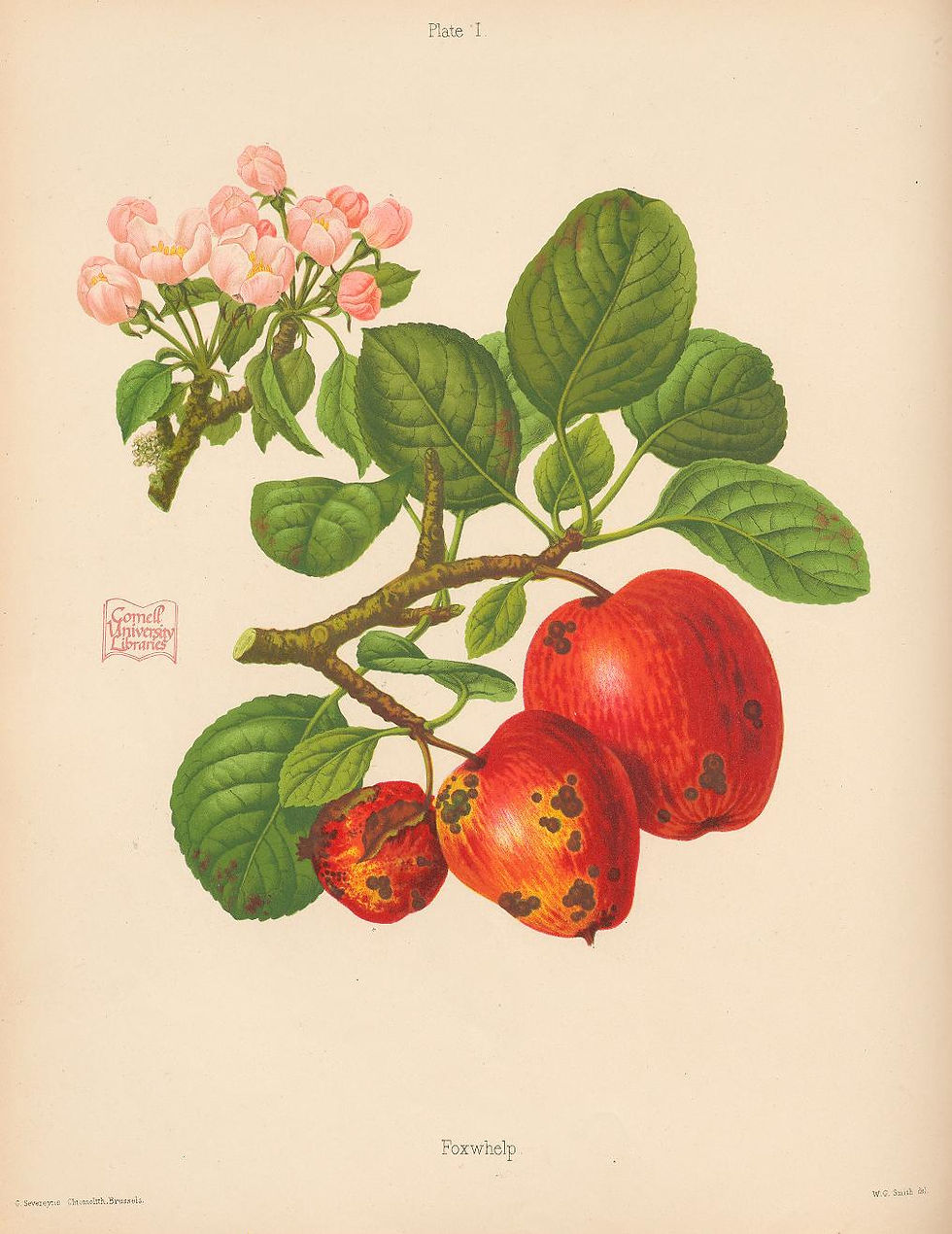
The book also records that the coloured plate of the Foxwhelp, above, was drawn from fruit grown on the estate of a W.H. Applerley, Esq. of Withington [a village some 5 miles from Hereford], “where the trees are believed to have been planted by one of his ancestors about the year 1690, and are still in fruitful vigour”. The plate below shows four different varieties of Foxwhelp apples, The Red Foxwhelp, Rejuvenated Foxwhelp, The Bastard Foxwhelp, and the Black Foxwhelp.
'Four different varieties of Foxwhelp apples and others, Plate VIII from The Herefordshire Pomona’, vol. 1, 1876-1885
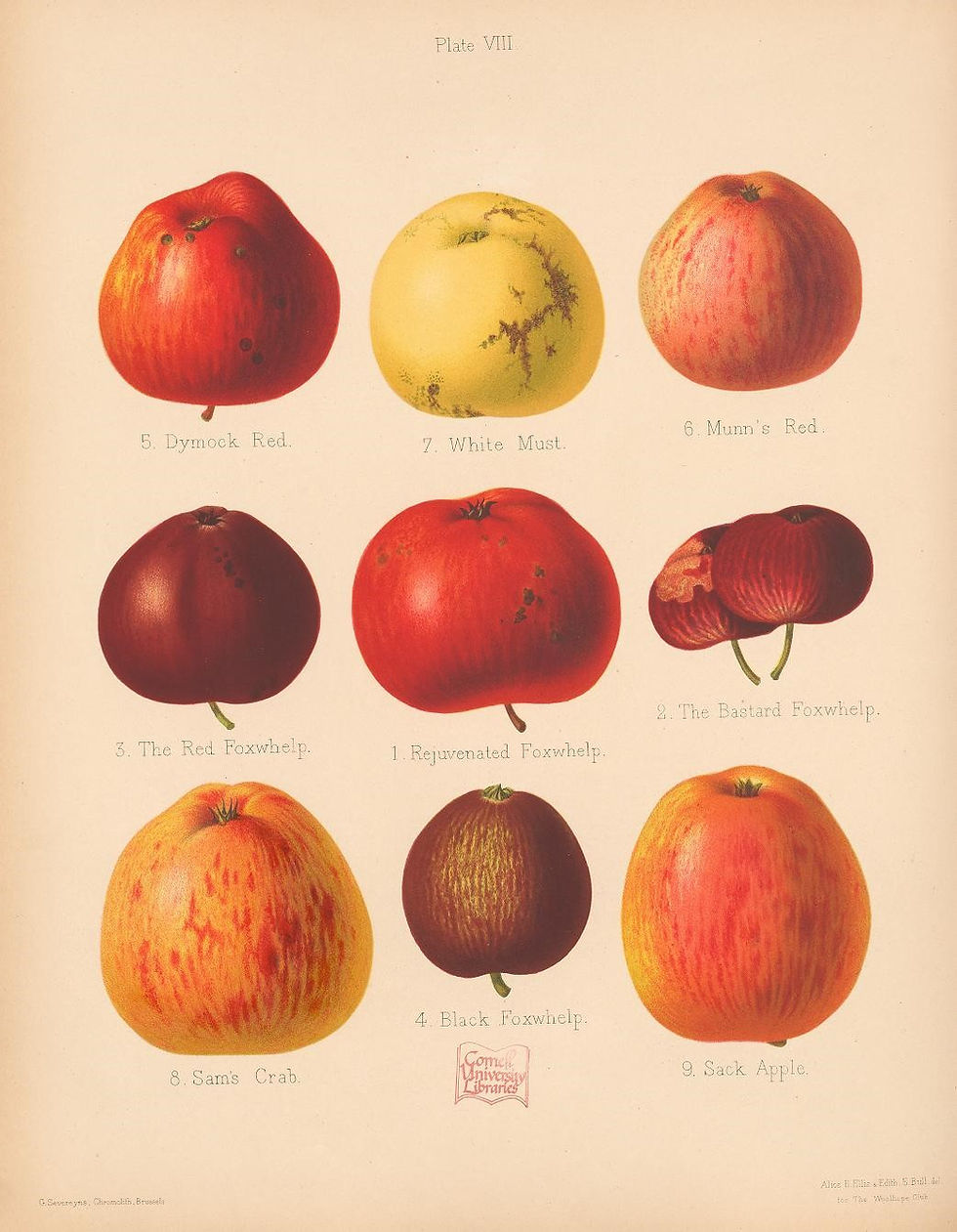
In 1882, the Transactions of the Club, reporting on the progress of The Pomona, praised “the good taste, accuracy, and really surprising delicacy of the coloured plates” by Alice and Edith.
Upon the completion of the work in November 1885, the Transactions note a presentation to the two artists “whose talents and patient perseverance the work owes so much of its beauty and exactitude, are entitled to some expression of publication appreciation on the termination of their labours”.
Alice and Edith had worked, for free, to produce in the words of the Transactions, “a series of illustrations unequalled in any previous work of a similar character”. Both of them were given a miniature portrait on ivory of Dr. Bull (who had died by this time), as well as a cheque for 100 guineas. The Club acknowledging that if they had used paid, professional artists, they would not have been able to afford to produce such a beautiful book in the first place.
Plate III from 'The Herefordshire Pomona’, vol. 1, 1876-1885 and, below, original watercolours on show at Croft Castle
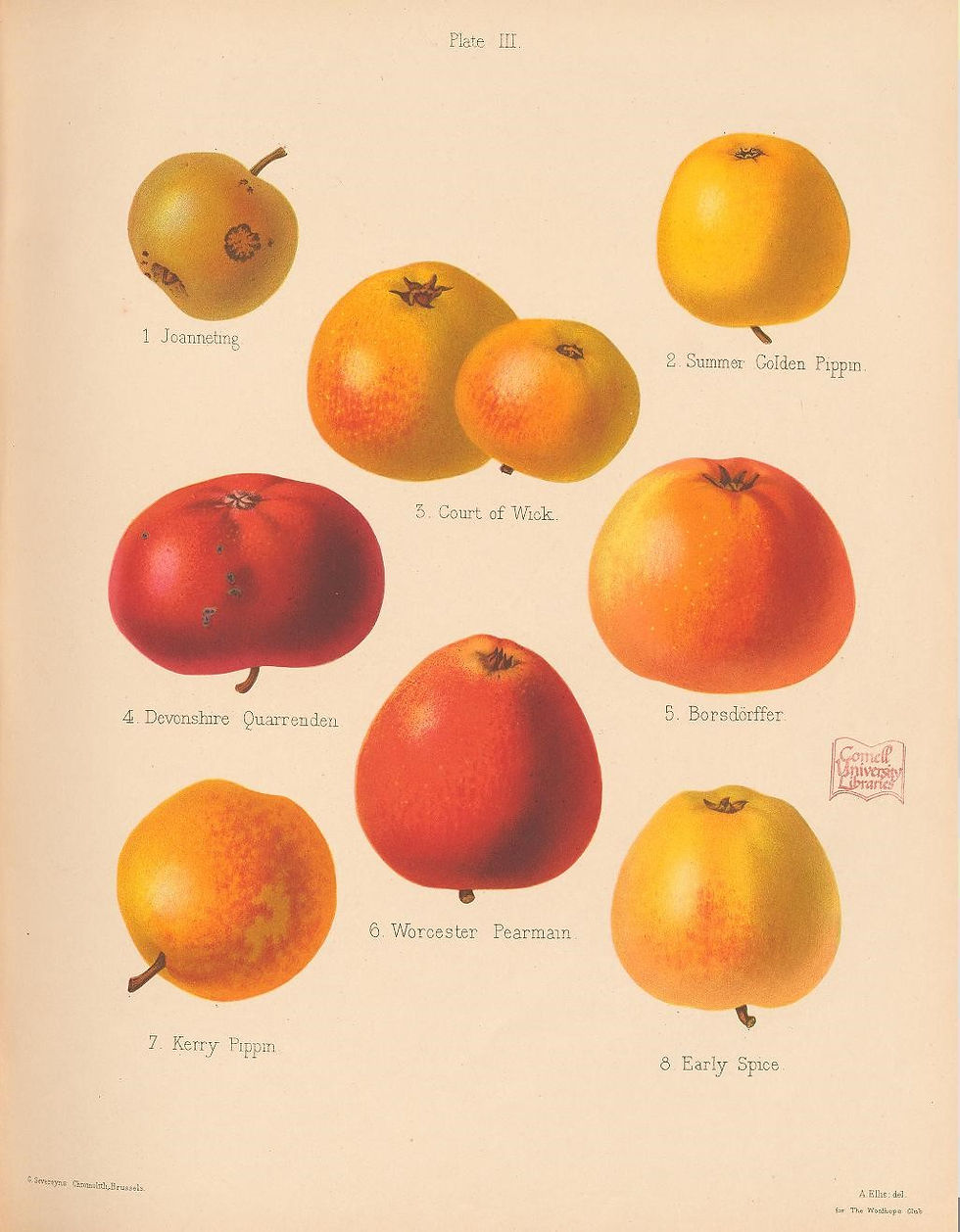

There's so much of interest to learn about the humble apple – and these watercolours are, I think, rather beautiful and give us a chance to see many varieties that we've lost over the decades, many with such wonderful names and interesting histories. And sadly I've found that, yet again, when writing about the Victorian and Edwardian eras, information about the women involved in these stories can be hard, if not impossible, to find.
Apples Stories, to be continued...
The exhibition at Croft Castle also revealed other interesting apple-related stories which will be the subject of Parts 2 and 3. These will include 19th century imitation apples from Australia – currently held at Kew but shortly to be on display at the Hereford Cider Museum, and also an earlier Pomona, Pomona Herefordiensis, published in 1811 by local boy Thomas Andrew Knight, Esq., then President of the Horticultural Society of London.
Notes:
The Herefordshire Pomona is available on line:
References/Further Reading:
George Monbiot, ‘Fallen Fruit’, The Guardian, 30 October, 2004
Information on 21st century orchards from Forestry Journal: Traditional orchards: Do they have a future in the UK? | Forestry Journal
The Herefordshire Pomona, online article for Cornell University Library by Eveline V. Ferretti, Public Programs and Communication Administrator, Albert R Mann Library, 2018:
‘Studies in the history of British fruit Part 2’, Occasional Papers from The RHS Lindley Library, vol.7, March 2012
www.applesandpeople.org.uk Apples & People is an online exhibition programme telling stories about the apple from around the world
Comments